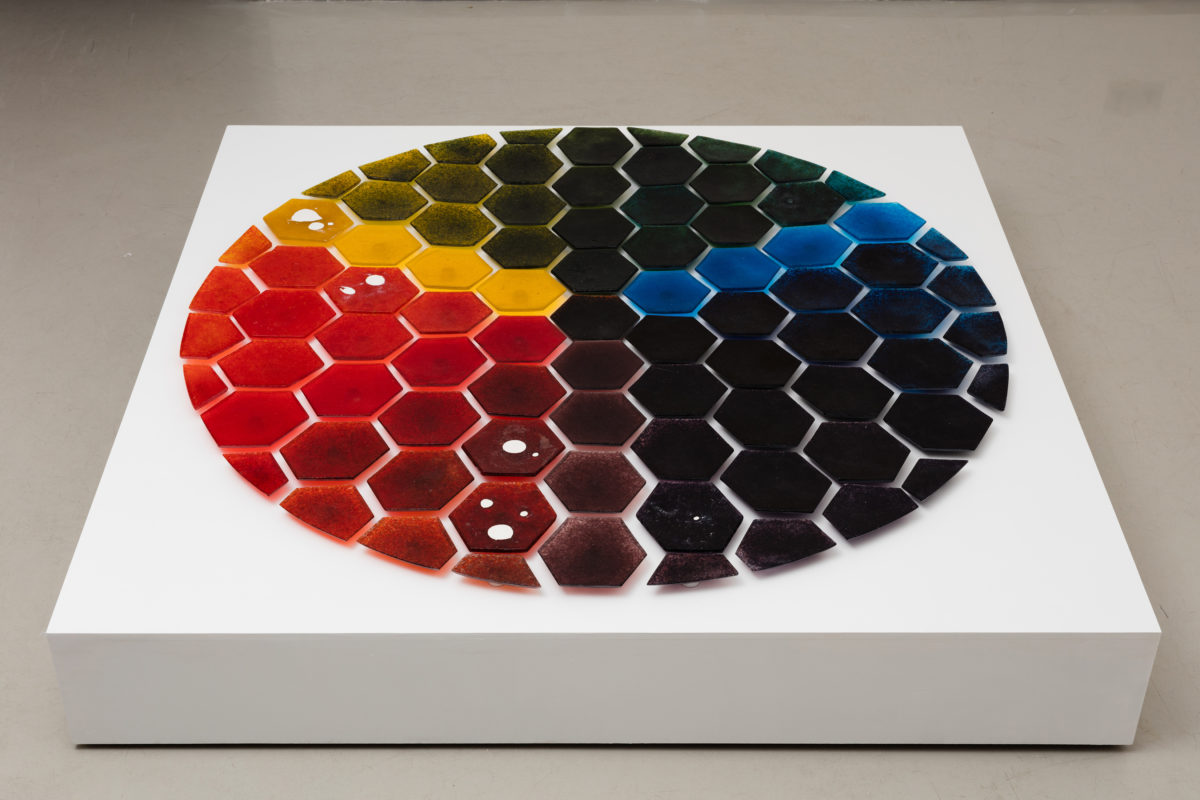PALOMAR took place at Laure Genillard Gallery, London from February to April 2016. [Gallery Page]
The title of this solo exhibition PALOMAR is taken from Italo Calvino’s novel Mr. Palomar (1983), made up of 27 short chapters that correspond to a distribution of 3 interests: visual; anthropological; and more speculative experience “concerning the cosmos, time, and the relationship between the self and the world.”
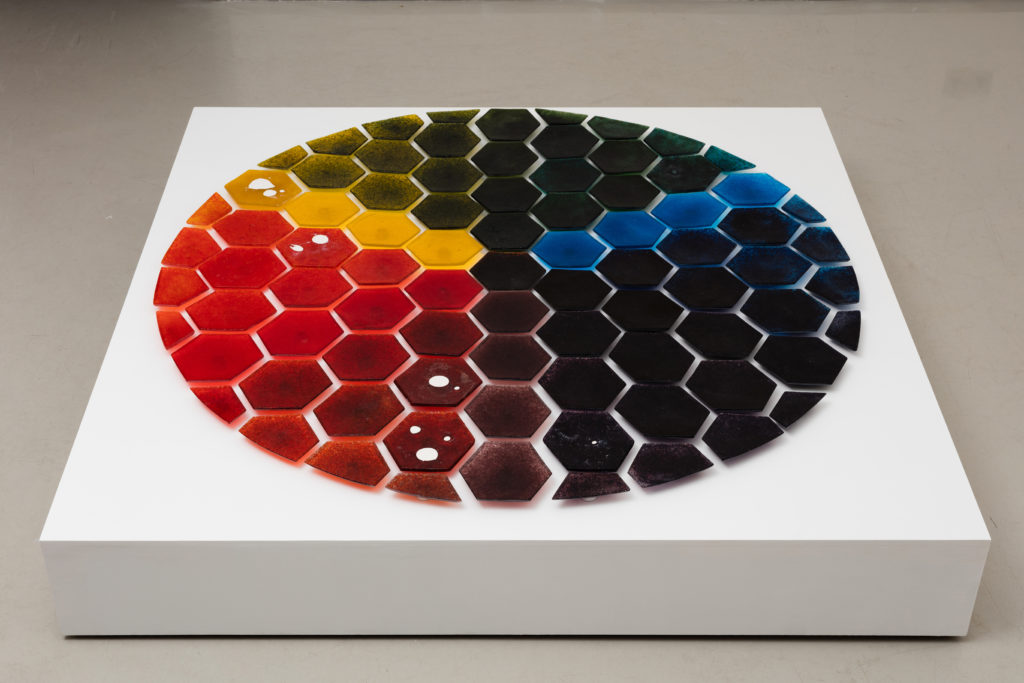
The World Looks at the World is a parabolic dish made up of 79 individually cast colored glass hexagonal tiles. It is a physical and metaphoric model of a series of larger dishes planned as part of a project to produce extremely wide band radio portraits of specific locations. These dishes are an exploration of radio as an extension of the eye in which radio waves are thought of as colors of light that fall well outside human visual spectrum.
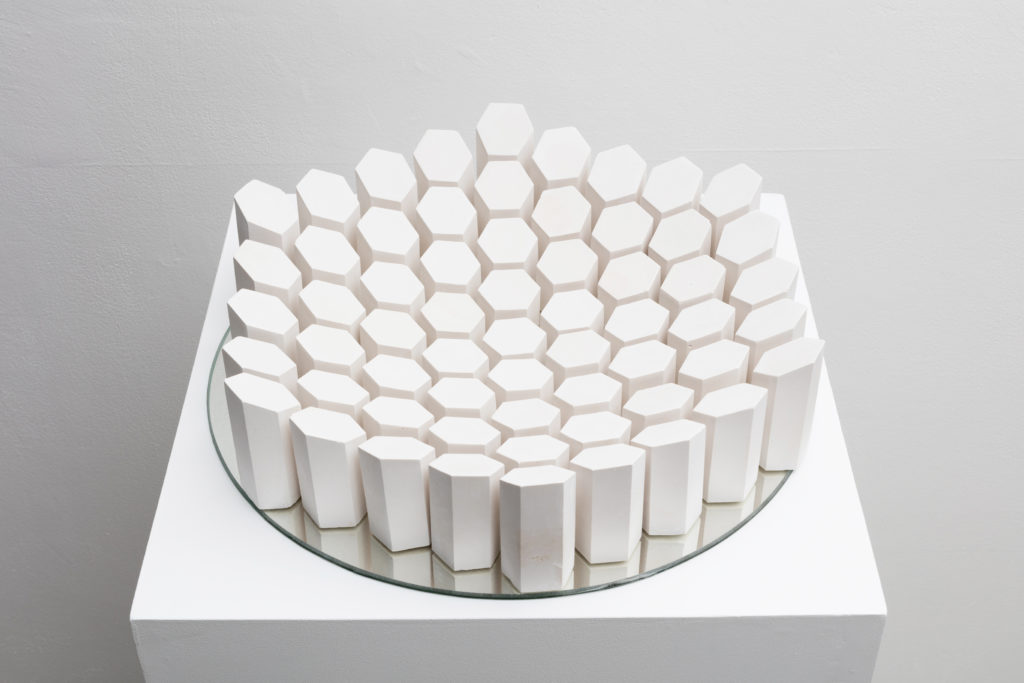
The Model of Models is a small-scale cast plaster model of the 79-part form used in The World Looks at the World. Each surface cut from a hexagonal column. The arrangement stands on a circular mirror.

The Infinite Lawn is the set of nine colored steel balls and wooden hoop used to produce The Eye and the Planets.
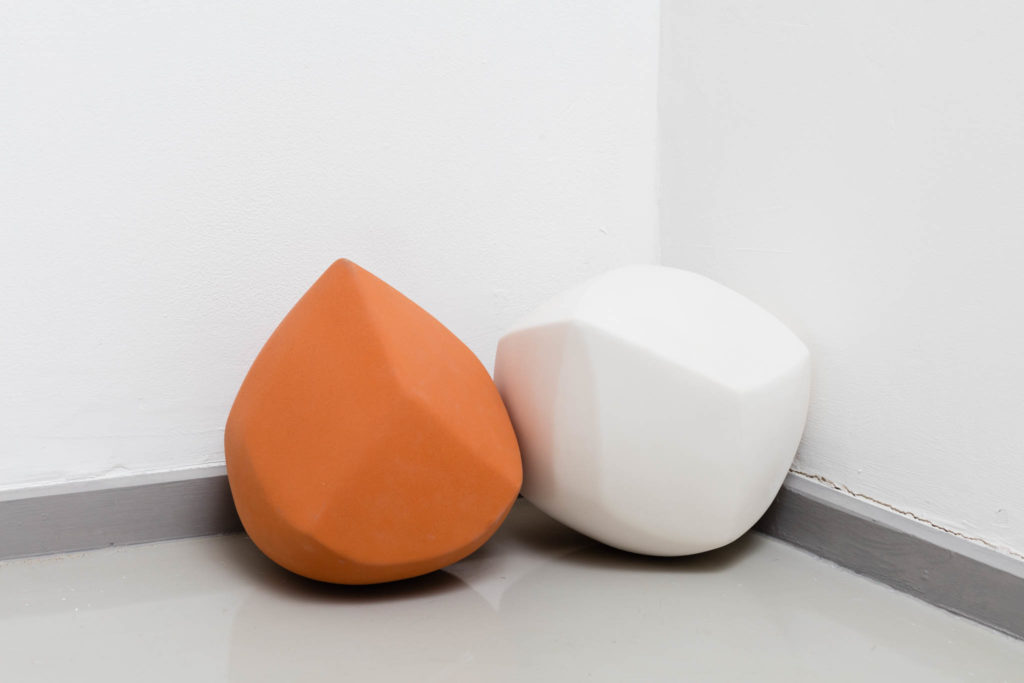
The loves of the Tortoises is two ceramic forms originally editioned by Casey Kaplan, NYC & Cerramica Suro, Guadalahara. Individually titled (Not)Turtles they are approximations of a Gömböc. Devised by mathematicians** Gömböc are self-righting: they will roll as if possessed before coming to rest on one precise point. Gömböc share a striking similarity with certain turtle species. By providing turtles with a shaped shell that allows them to avoid finding themselves on their backs, evolution had anticipated the Gömböc by millennia.
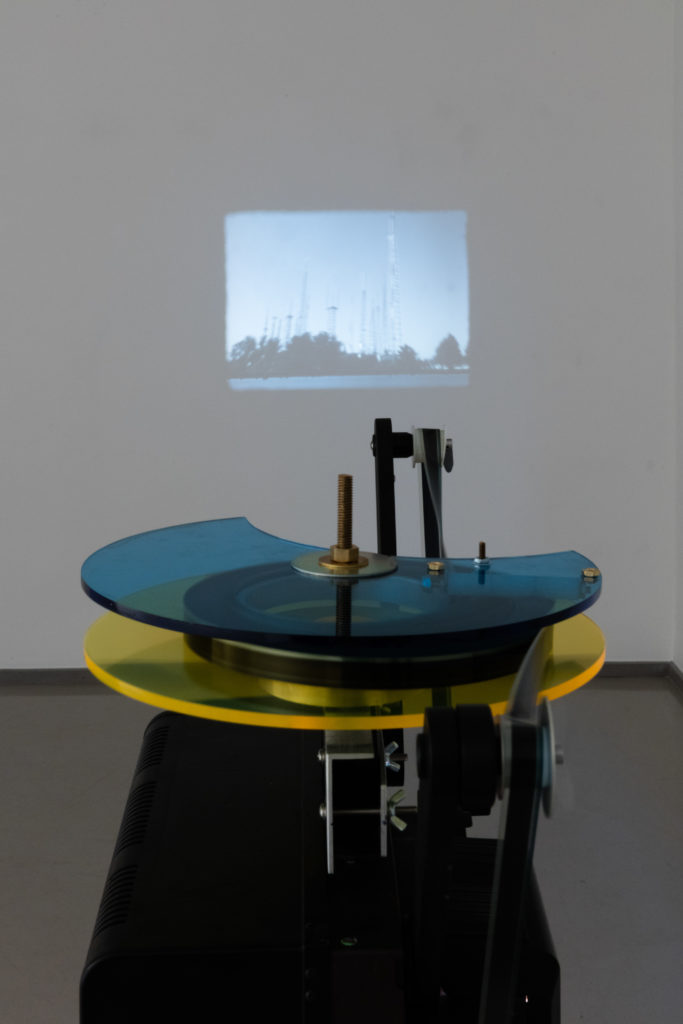
PALOMAR is a 16mm film approximately twelve minutes long, the film is a colored document of a partial solar eclipse viewable from Southern California on October 23 2014 and arose from an ongoing interest in the function of reflection and shadow in the production of an image and color. I filmed the eclipse using an adapted amateur telescope from Mount Wilson near LA ( the site of the largest aperture telescope in the world until 1948, when it was over-taken by Palomar Observatory some 90 miles southeast in San Diego County). The film captures the primal light source, the sun, invoking procedures similar to the photogram—complicating the process of using shadows cast by the sun by depicting the shadow on an image of the sun from within that shadow.
Working with a Hollywood color timer, the professional who adjusts the light used in printing color film to affect the color of a final print, I made a color negative from the black and white original. Each shot was colored according to the formal structure laid out in Calvino’s index, matching the numbers 1, 2, 3 with red, green, and blue light respectively. There are 33 shots in the film, one for each chapter plus seven shots at the end to represent the index.
16mm film, trt: 12min, 2015
Color positive film printed from color-timed internegative printed from black and white original positive film. Shot Oct. 23, 1014 at Mt Wilson Observatory, 1:33–3:45 pm.
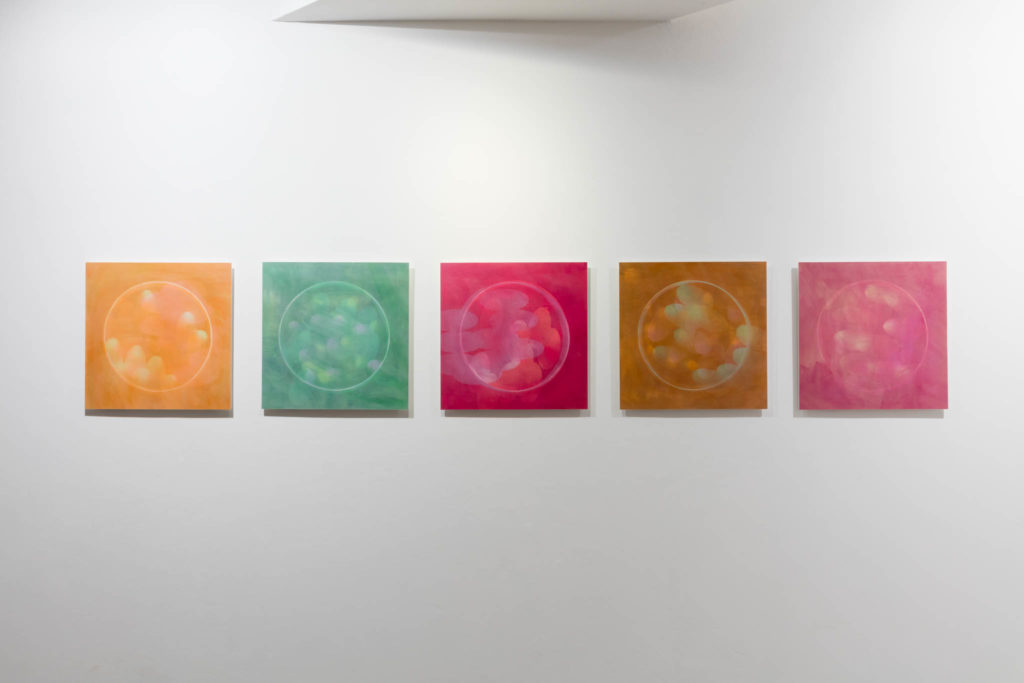

The Eye and the Planets is a series of gum-bichromate prints. Each print was exposed three times using the sun. Each exposure used one of nine colors resulting in a distribution of colors similar to that of the PALOMAR film (3 sets of 3 colors were exposed 3 times). The images are the result of allowing nine 3-inch steel balls (like boccia balls) to roll into a position by chance within the boundary of a circular hoop the radius of which would allow the exact packing of 19 such balls. This process imitates on a macro-level the microscopic arrangement of particles within the colloid solutions of bum-bichromate and other photographic processes. Recently the shadows cast by spheres in such solutions have been used to examine and classify the dispersion patterns of such particles.*
*see: Characterization of Patterns Formed by Shadows of Spheres, Sarah V. Kostinski, Elizabeth R. Chen, and Michael P. Brenner, Physical Review Letters 112, 235502 – Published 13 June 2014
** discovered, named and sold by mathematicians Gábor Domokos and Péter L. Várkonyi, a Gömböc, is “a convex three-dimensional homogeneous body which, when resting on a flat surface, has just one stable and one unstable point of equilibrium” (Proc Biol Sci. 2008 Jan 7; 275(1630): 11–17. Published online 2007 Oct 17.)
